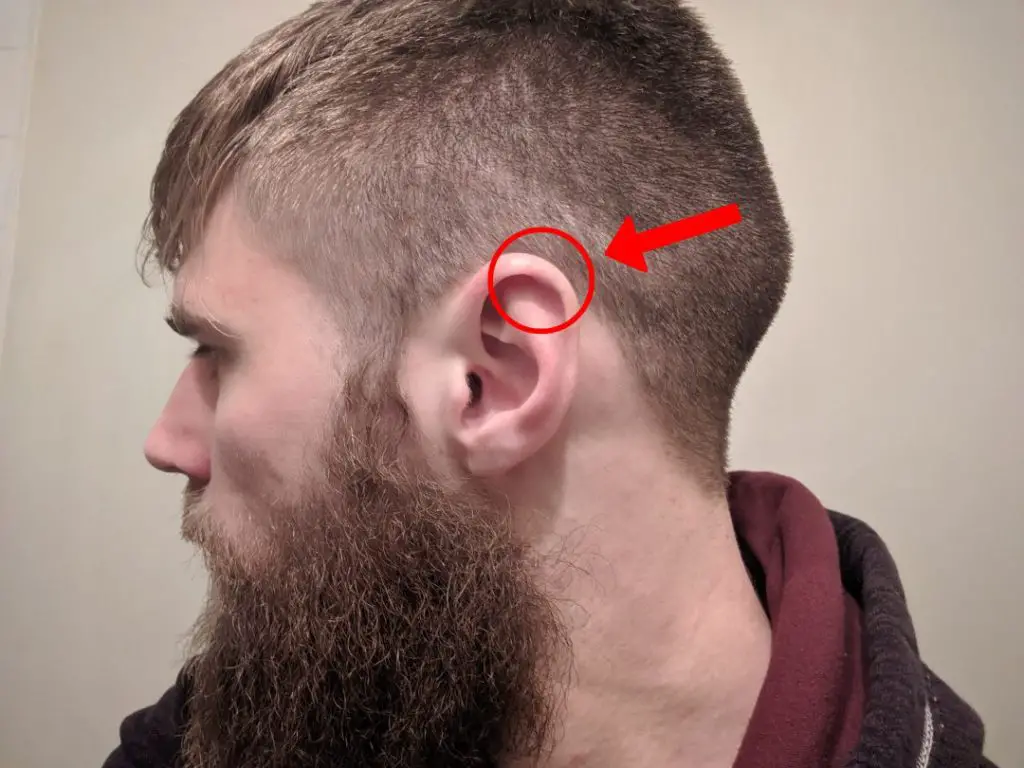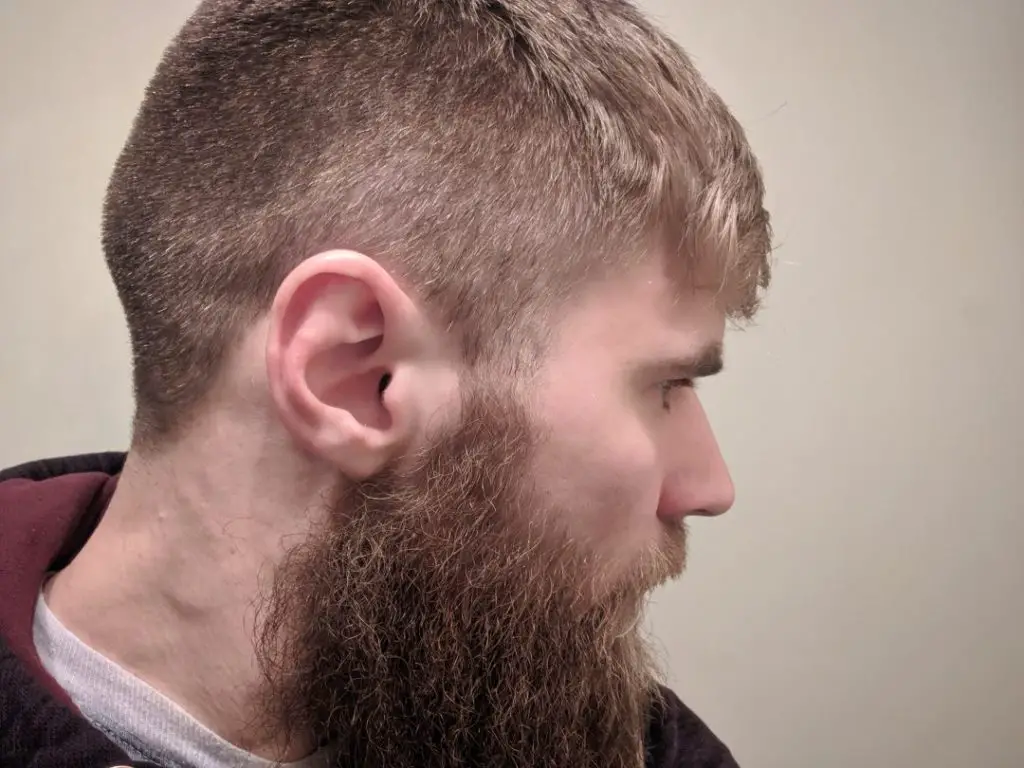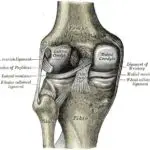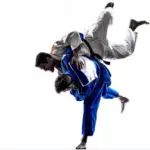Ever wonder why BJJ practitioners have funny looking ears? Are you going to get them too if you train BJJ? This article is going to cover what cauliflower ear is, how to prevent it, common methods to treat it, and if it is common in BJJ.
I’ve had experience with minor symptoms of it and I know people in my class that has it too. I wanted to understand it more to help others understand it too.
Cauliflower ear is a result of trauma to the ear resulting in hematoma or collection of blood underneath the skin. This separates the skin from the cartilage and liquid fills the space between them. Once a cauliflower ear occurs you have 5 to 10 days before the fluid in the ear to hardens. Once it hardens surgery is required to fix the deformed ear.

What Is Cauliflower Ear?
Cauliflower ear is a deformity to the ear caused by blunt (or grinding) trauma resulting in a hematoma or collection of blood underneath the skin. The blood clots and blocks the flow of blood and nutrients within the ear. This separates the skin from the cartilage and liquid fills the space between them. The liquid will harder, thus becoming permanent and causing the cauliflower ear look.
Cauliflower ear doesn’t have to be noticeable or extreme like many pictures depict. It can start small and be hardly noticeable, if at all, or blow up like a balloon with just a single blow. It depends on the person’s ear and the amount of trauma on the ear.
Feel around your ear, typically around the Antihelix (the upper ear), if you feel small bumps throughout it may micro-traumas – cauliflower ear.
Once a cauliflower ear occurs you have 5 to 10 days before the fluid in the ear to hardens. And up to 8 weeks for the perichondrium (the connective tissue that envelops cartilage) to permanently attach to the cartilage surface. If the fluid in your ear hardens it is permanent. The only way to get rid of the cauliflower ear at this point is surgery.
Is Cauliflower Ear Bad?
Cauliflower isn’t necessarily bad, but it can come with some downfalls, the most obvious being deformed ears. It is also possible for the ear to swell so much that it blocks the ear canal blocking sound. Additionally, before the ear hardens it can be quite painful to deal with, especially laying on it at night.
Cauliflower ear has been known to increase the risk of ear infections and hearing loss.
The percentage of a positive history of ear infections in wrestlers with cauliflower ear was about twice this rate among other groups of wrestlers. Although this finding was not statistically significant, it could be considered as a possible reason for a higher rate of hearing loss in cauliflower ears.
ASIAN J SPORTS MED.
Below is a table displaying the hearing loss found in wrestlers with and without a cauliflower ear.
| Percentage of Ears With Hearing Loss, % | ||
| Frequency, KHz | Non-Cauliflower Ear | Cauliflower Ear |
| 0.5 | 11.9 | 24.8 |
| 1 | 1.1 | 7.0 |
| 2 | 2.9 | 9.3 |
| 3 | 9.0 | 15.2 |
| 4 | 14.3 | 21.2 |
| 6 | 15.1 | 29.1 |
| 8 | 8 | 12.3 |
Early Signs Of Cauliflower Ear
Early signs of cauliflower ear are pain, swelling, bruising, and deformity of the ear. Typically cauliflower begins with pain in and around the ear. Most students will experience this after a few classes. Other more severe symptoms may include loss of hearing, ringing in the ear (tinnitus), headaches, blurred vision, swelling, or severe bleeding.
Below is a picture of my ear after a class. The instructor was demonstrating armbars and the importance of keeping the legs tight. My ear got in the way as he squeezed his legs.
Take note of the small amount of bruising and swelling in the red circle. It isn’t much, but this is the sign of cauliflower ear. Within a week it hardened up and that portion of my ear no longer has a dip in it.

As a comparison, here is my other ear. Notice it has a crease all the way around.

Can You Prevent Cauliflower Ear?
The best way to prevent cauliflower ear is to wear an ear guard or when symptoms of cauliflower occur treat it as an injury, such as getting a doctor to drain it, take time off from training, and take the precautions to reduce swelling. Alternatively, not grinding your head or pulling your head out of tight chokes reduce the risk of developing a cauliflower ear.
Ear guards are protective pieces of headgear that cover just the ear. Many people who do wear them will wear them during the rolling portion of the class as it can be hard to hear with them on. The ear guard reduces the amount of impact your ear receives if it gets hit and it removes friction from grinding you head against your opponent’s lapel or ground.
Learning proper techniques to get out of chokes instead of pulling your head will greatly reduce the risk of cauliflower ear. Many of my cauliflower ear symptoms were from pulling my head out of guillotines, triangles, or any other tight squeeze around my head.
Sometimes you cannot help your opponent is squeezing your ears, other times, like being stuck in a triangle does not require you to pull your head out if you know the techniques to escape.
If you just drained your ear from cauliflower, take a break from training. Jumping back into training too soon can cause it to flare up again and sometimes worst than the first time. Wearing an ear guard after draining can also cause it to flare up again.
Wearing an ear guard on an ear that’ just been drained can cause it to get worst as there is still friction and rubbing happening. Since the ear is already damaged the ear guard will be rubbing a damaged area.
Is Cauliflower Ear Common In BJJ?
Cauliflower ear is common in BJJ; however, many people do not have extreme cases as they take the measures to prevent it from getting worse. Furthermore, as your technique gets better you will find yourself in fewer scenarios that cause cauliflower ear. reduce the risk and prevent cauliflower ear from getting extreme.
Is It Possible To Train BJJ Without Getting Cauliflower Ear?
It is possible to train BJJ and not get any major cauliflower ear. Unfortunately, most people’s ears are prone to it and will eventually develop it if you’re not careful. Using headgear, avoiding rolling when cauliflower ear symptoms appear, draining, and using compression will prevent cauliflower ear from occurring.
The most common ways that people get it in Jiu-Jitsu are when the head is trapped and getting squeezed, performing takedowns where the head is forced against the opponent, using your head to base or grind against your opponent, or an accidental strike to the ear by someone’s head, arm, leg, etc.
Common Ways To Treat Cauliflower Ear
- Draining
- Compression
- Earmold
- Icing
Draining
Draining is the most common way to get rid of the cauliflower ear as it removes the fluid directly from the ear. It is recommended to go to the doctor to get this done; however, many people do this themselves. Be sure to sterilize the ear with alcohol swabs and use a clean syringe. Ear infections can occur which can be very dangerous.
Compression
Magnets prevent the fluid from filling the cavity that’s created when the ear is injured, either after draining or before swelling has begun. It can be an effective method to prevent cauliflower ear from happening! One of my friends in Jiu-jitsu mentioned he tried this method and had great results.
Earmolds
Earmolds work by compressing your entire ear to prevent fluid build-up. Since they are the shape of your ear it’ll be a tight and accurate fit. The most beneficial method to use earmolds is to take a mold of your ear before damage occurs. If your ears have a lot of swelling you can create a mold after draining your ear to ensure it doesn’t fill back up.
Conclusion
Cauliflower ear occurs in Jiu-Jitsu from trauma occurring on the ear. Trauma generally occurs from the following:
- Having the head squeezed
- Improper techniques used to escape chokes
- Takedowns where the head impacts the opponent
- Grinding your ear against the mat or opponent
- The impact from your opponent’s body, arms, legs, head, etc.
The most common method to prevent cauliflower ear from occurring is to use an ear guard and learn proper techniques to reduce the amount of time spent pulling your head out of positions or chokes.
The most common methods to treat cauliflower ear are:
- Draining
- Magnets
- Earmold
Cauliflower ear is permanent once the fluid hardens requiring surgery to fix the deformity. It has been found that it can cause hearing loss and increase the risk of infections. Additionally, cauliflower around the inner ear can cause swelling to completely block your ear canal, blocking all sound from entering.


